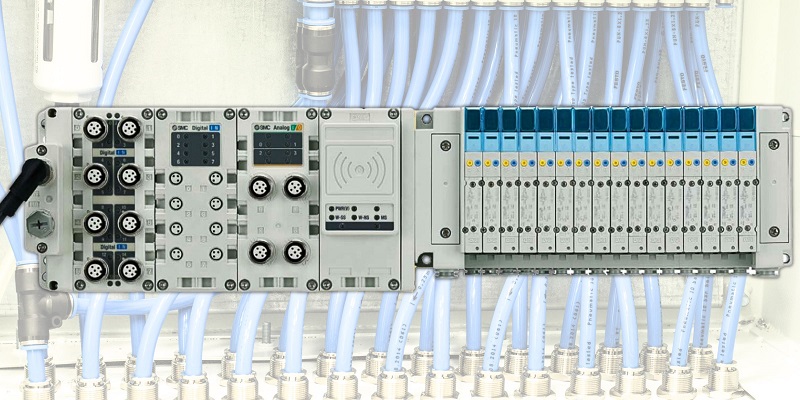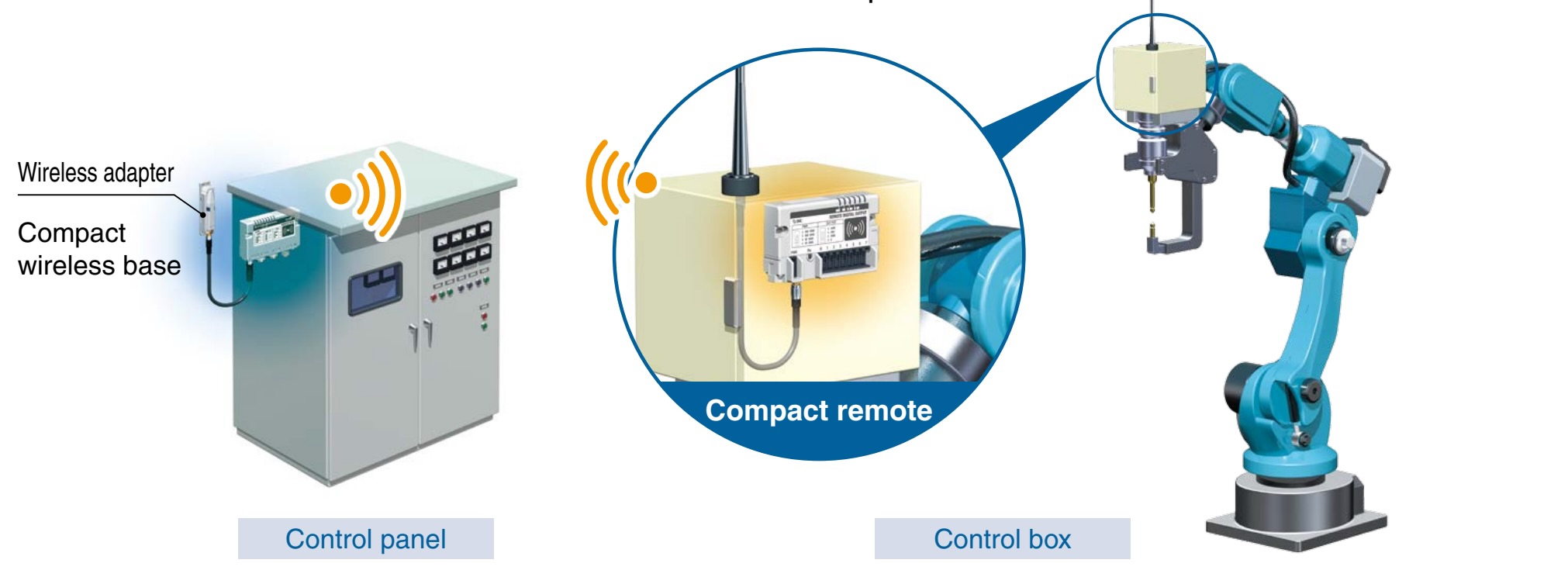Cut the Cord: New Wireless EXW1/EX600-W Series From SMC
Reducing wiring costs and complexity, SMC’s new EXW1/EX600-W Series uses signal hopping to ensure signal reliability and strength.
SMC, well-known for its pneumatics and automation, recently released a new wireless communication I/O device for industrial systems. The EXW1/EX600-W Series is designed to help reduce physical complexity within automated cells by eliminating most Ethernet communication cables which are typically necessary to operate such a system. According to SMC, only a single Ethernet cable is needed between the PLC and the base unit.

Featuring a 2.4 GHz ISM frequency band and frequency hopping every 2 ms, SMC’s EXW1/EX600-W series of devices offer superior noise resistance and signal reliability. Image used courtesy of SMC
Reduced Complexity, Improved Reliability
Because the devices communicate wirelessly, linking devices and cells is simplified, making integrations less complex. To reduce the chance of signal interference, the EXW1/EX600-W series features an innovative noise-resistant frequency hopping system. SMC explains that these features help lower system implementation costs, offer improved space savings, and reduce signal disruptions.

Controlling robots and similar manufacturing systems with wireless I/0 communication is straightforward and more accessible than ever with SMC’s EXW1/EX600-W Series devices. Image used courtesy of SMC
EXW1/EX600-W Series Wireless System Features
The EXW1/EX600-W series is designed to reduce implementation costs in two ways. First, by eliminating much of the cabling needed for cell communication and also by reducing the labor needed to install the wiring itself. For example, compared to a wireless system, a wired system will require 14 cables with connectors at each end, while the wireless unit will only require one.
EXW1/EX600-W Series devices can be used interchangeably with SMCs SI line of serial communication devices. To support flexible implementations and assure reliable communication across cells and devices, SMC offers a remote antenna that can be mounted on the outside of a signal-blocking metal cabinet.
Frequency Hopping Ensures a Clear Signal
Employing a 2.4 GHz ISM frequency band, the device hops its frequency every 2-5 ms depending on model and application. Frequency hopping ensures that communication between devices and cells remains uninterrupted by other wireless signals or electrical noise. SMC says its devices only communicate when there is an event. If there is no event, then no signal is sent, which helps reduce the number of signal outputs at any given time.

Frequency hopping establishes a stable wireless environment by using an original protocol that is not affected by interference from other wireless devices. Image used courtesy of SMC
In the event a fault develops in the system, SMC provides diagnostic tools to troubleshoot the issue. The EXW1/EX600-W devices communicate system status via diagnostic signals and status-indicating LEDs, with web function and I/O configurator settings delivered by the software. The number of communication retries, receiving signal strength, and operating status are delivered by the device’s diagnostic software.
A Simple Strategy to Reduce Wiring Complexity
SMC created the new EXW1/EX600-W wireless communication system to help reduce wiring complexity and avoid automation system implementation and upgrade costs. SMC’s wireless devices can be used interchangeably with wired units, and with the help of signal hopping and optional external antennas, reliable device communications are assured.






